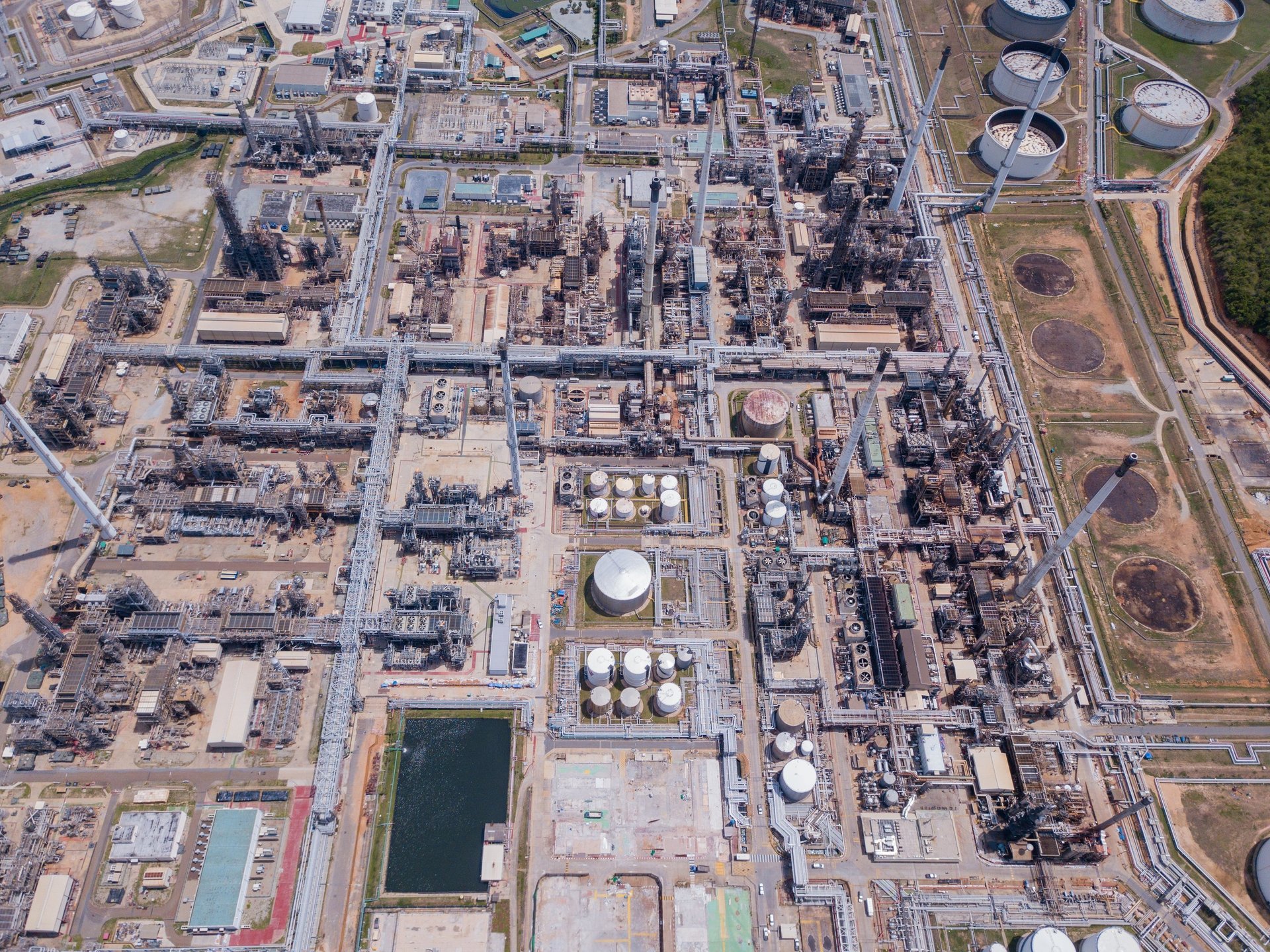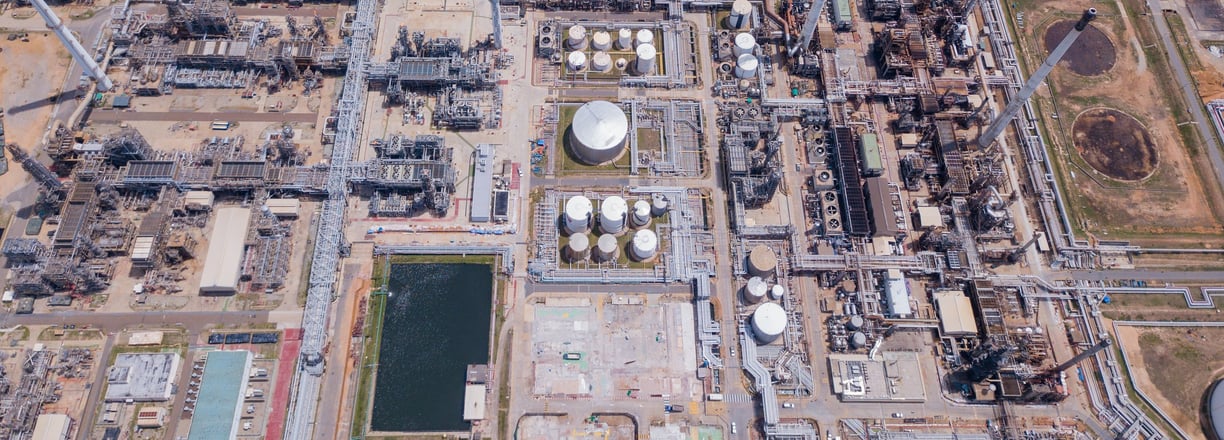
Refinery Inspection
FlyDroneD uses high-resolution cameras and thermal imaging technology for inspecting refineries and large construction areas.
Image Quality and Detail: High-resolution cameras capture images with a high pixel count, providing clear and detailed visuals. This is crucial for identifying small defects, corrosion, or cracks in refinery equipment.
Real-Time Data Transmission: These cameras can transmit images and videos in real-time to ground stations, enabling immediate analysis and decision-making. This is particularly useful for quick assessments and emergency situations.
Detecting Temperature Variations: Thermal imaging cameras detect infrared radiation, which is emitted by all objects based on their temperature. By capturing this radiation, thermal cameras create images that show temperature variations across surfaces.


Identifying Hot Spots: In refineries, thermal imaging is used to identify hot spots that may indicate issues such as overheating equipment, insulation failures, or leaks. This helps in early detection and prevention of potential problems
Gas Leak Detection: Thermal cameras can also detect gas leaks by visualizing the temperature differences caused by escaping gases. This is crucial for maintaining safety and preventing environmental hazards
Non-Contact Inspection: One of the significant advantages of thermal imaging is that it allows for non-contact inspection. This means inspectors can assess equipment from a safe distance, reducing the risk of exposure to hazardous conditions
Connect
Linking clients with skilled drone operators efficiently.
Services
Support
sales@flydroned.com
+31627364648
© 2024. All rights reserved. Click for our General Terms and Conditions
